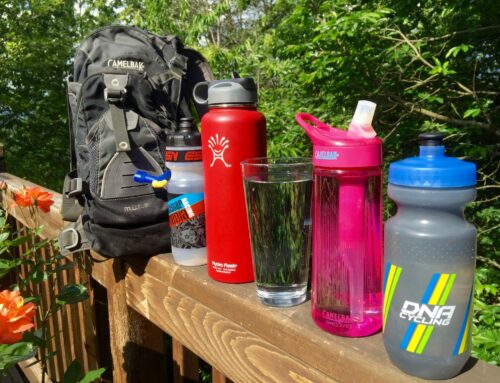[vc_row][vc_column][vc_column_text]This open forum letter from Chad Sperry of Breakaway Promotions really speaks volumes. Breakaway Promotions has put on some awesome events for many years, so hearing his prospective says a lot. I’ve copied it below… it’s a bit long, but worth a read. He hits the nail on the head with some topics that were actually driving forces behind the conception of the Dialed Cycling Team and Dialed Cycling Club. In short, we need to grow cycling, we need protect cycling, we need to promote cycling, and we need to give back to cycling. I’m excited at the prospects of Dialed Cycling and I vow to do my part… will you join me? -Jake[/vc_column_text][/vc_column][vc_column][vc_column_text][Chad Sperry – Breakaway Promotions / Posted on OBRA Chat – January 26, 2017]
Ok so a lot has been going round and round about why cycling is declining,
why events are going away, and what can be done about it. For the last
month I have been contemplating how to best write this email and best lay
out my humble opinion while creating productive conversation. So here is
my attempt and giving insight and background. It is up to everyone to come
to conclusion on how to fix it however.
For starters some of you may not know me or my company Breakaway
Promotions. My name is Chad Sperry and our company has been putting on
races in Oregon and across the country for the last 20 years. We had
humble beginnings cutting our teeth with the OBRA Hillclimb championships
as our very first event, were with the tremendous help of Candi Murray,
were able to pull off a successful event back in 1997. Since then we have
run everything from small grass roots events like Gorge Short Track to some
of the largest in the country like the Tour of Utah, Cascade Cycling
Classic and 20+ national championship events for USA Cycling, such as Mt.
Bike Nationals, Collegiate Road Nationals, Masters Nationals, Amateur
Nationals, Junior Nationals, Para Nationals etc. So I have learned a few
things over the past 20 years about races, rider behaviors, and the market.
For starters lets talk about races and why they are disappearing. Races
are not solely funded by your registration fees. Unless you are drawing
over 300 riders and offering little to no prize money, your favorite local
races are being funded by local sponsors and occasionally a national
sponsor. Local sponsors sponsor bike races in the hopes that you will
shop, eat, or stay at their establishments when you come to the race. So
when you do NOT stay at the official race hotel, eat at the local
sponsoring resaurant, or shop at the local bike shop you are jepordizing
the race by not supporting the businesses that helped you race that day.
Period. Most of the time funding will be between 25%-50% covered by
sponsors. I have always maintained that if I wanted any kind of paycheck
from a race it had to come through finding sponsors as registration fees
did not 100% cover the cost of the race.
Putting on races has gotten very very hard in the last 5 years. In some
areas down right impossible. Finding a large single loop road race course
today is like finding a unicorn. Seriously. Why you ask (or maybe you
didn’t) because of limited growth and expansion of new roads coupled with
major population growth tying up all the existing roads. When was the last
time anyone can remember a brand new “road” being built and paved in your
area. Not talking the 1/4 mile piece of road into a new housing division,
I am talking full fledged several miles road. I personally can not think
of a new road in the past 20 years! So as our existing paved roads
continue to get more and more traffic agencies have clamped down and said
no to permits. This is not just your local roads but also includes Forest
Service and state roads as well. For the past 3 years the Mt. Hood
National Forest has allowed NO new event permits for summer events and
there is no plans to open that up in the near future. Deschutes National
Forest is implementing new restrictions just this year for no new events
between July and September. So if I were to try and create the Mt. Hood
Cycling Classic and Cascade Cycling Classic today it would be impossible.
I can remember doing the Blue Lake Triathlon back in 1992 were the bike
course went from Marine Drive through Troutdale and out to the Corbett
Overpass on Interstate 84. We were actually racing our bikes on I-84!!!
All of you that have been racing 20+ years have a similar story about a
race that no longer exists because traffic no renders it impossible. If we
still have access to roads and city streets the cost to put on an event has
sky rocketed. To put on the Stumptown criterium in downtown Portland two
year’s ago cost over $40,000 to put on. We had $30,000 in sponsorship
money (which is rare we see this much) and $3500 in entry fees. Some of
you smart accountants just did the math. That means I personally lost
$7500. The cost of putting on the Cascade Cycling Classic Criterium in
downtown Bend has literally increased by 10 times. No that is not a
mistake the cost is literally 10 times what is was to put on 10 years ago
when adding all the new permit fees, required engineered traffic plans,
signage, barricades, man hours, detours, etc.
Another big one is liability. Our sue happy country is strangling us with
frivolous law suits. New legislation in Oregon is pushing to eliminate
caps and render standard release waivers useless. A number of permitting
agencies are now requiring double the limits on insurance certificates or
just plain denying event permits do to risk. Our sport is one of the
riskiest sports out there. Compared to running, triathlons, or any other
endurance sports it has way higher risk of injury. At a large criterium
you can expect 30-40 medical occurrences with 4-5 of them resulting in
broken bones. Now compare that to the large marathon we own and operate,
the Columbia Gorge Marathon, were in the past 8 years we have seen 7
medical occurrences such as, bee stings, and small abrasions and sprains.
By the way the marathon has 1500 people a year participating compared to a
large crit that has 400.
Here is one more thing to consider when discussing races. 90% of race
organizers are volunteers. The remaining 10%, who are professional race
organizers, live very very modestly. They do what they do because they
love the sport and have a huge heart for giving back. Only one company in
the country that I know of is making a strong 6 figure salary for putting
on bike races and that is because they are putting on the largest,
televised, races in the country. Everyone else is scraping by. Wondering
how to pay the mounting medical bills, insurance, feed the kids, and
support their families etc. If it was not for my company’s half marathon’s
and marathons we own and operate I would have filed bankruptcy year’s ago.
I use the runs to subsidize my cycling habit. So next time you decide to
write out that smart ass, snarky email intended to flame a race promoter I
ask you please reconsider. If you think your frustrated and disappointed
you have no idea what that poor promoter is going through. Nothing is more
discouraging than to donate huge amounts of time and stress for peanuts and
get ridiculed for your efforts. It is a lot of times a thankless job and
those kind of responses have definitely factored into my decision to move
away from promoting more bike races. I have a tough skin and can take it
but why should I when there is little to no reward.
Now the big topic is why are we in such a huge decline. Here is my humble
theory. Actually I have two theories. The first is our society as a
whole. We are seeing more and more people moving to inactive
entertainment. Back when I was a kid (yep I am an old dude now) our thrill
was to ride our BMX bikes. We lived for that. We would build sketchy
jumps and bomb down crazy trails. Nintendos and Atari’s were just coming
onto the market. The baby boomer generation and the one just following it
embraced this outdoor physical exertion and excitement. We have seen a
huge portion of riders who in the 80’s, 90’s and early 2000’s were excited
to endure long painful races. The challenges were embraced and enjoyed.
That cross section of riders we have watched cycle through the ranks (sorry
for the pun). In the early 90’s they were the 25-40 year olds that came
out in droves. In the 2000’s they were masters racers complaining there
was not a 50+ category but still coming out in force. That group is now
retiring and moving on as they hit their mid to late 50’s and 60’s. There
is no large group coming up to fill in and take their place. Today’s youth
as a whole want to entertain themselves with video games, virtual reality,
and other electronics as opposed to getting out and finding entertainment
in nature. I have 4 boys three are in high school. I have coached
wrestling, and cross country for the past 12 years. Numbers in these
sports have seen a continued decline. We see only half the number of kids
turn out compared to what we did back 20 years ago. I am taking this
reference from my time coaching in the Gorge and Central Oregon. Portland
may be different, but I kind of doubt it.
The final reason for a decline is Lance Armstrong. Yeah I know once again
Lance is the root of all problems and a slime bag. But before he was a
slime bag he was a national hero. He was in movies (Dodgeball!) on TV,
winning Espy’s, dating Hollywood stars and he was the biggest billboard the
sport has had probably ever had (Greg was a stud but never made it so
mainstream). When he raced the tour a nation watched and followed. That
is gone. Now coverage is a fraction of what it was to the national
audience. There is no longer a professional athlete in the sport of
cycling on par with Tom Brady or Lebron James that is motivating and
inspiring people. You can not deny the impact that it had in inspiring
people to try the sport.
Final thought is early season races and bad weather. To conclude that
weather is a cause of diminishing numbers is a little skewed. All you need
to do is look back at historical data to come to this conclusion. Back in
2005 there were no less than 12 road events on the calendar before April
3rd (there are now only 12 events for the entire year!). In fact all three
Banana Belt events were completed prior to March 13th!!! That same year
huge numbers turned out for the Mt. Hood Cycling Classic and Elkhorn in
June and the Cascade Cycling Classic in late July! Granted it is way more
fun to race in nice weather than in snow, rain, and wind in March but that
would take serious self control by the average cyclist to NOT attend that
early March race but wait till May to begin racing. Which I will admit is
really hard to do after investing 3 months riding trainers and in crappy
weather.
When it has come to our all of our events we have always placed them in the
best time of year for the region and really never paid attention to trends
or rider numbers. Our focus was providing the best quality experience for
our participants. So whether is was the Cherry Blossom Cycling Classic and
Gorge Roubaix in The Dalles in April, when weather is sunny and temps are
moderate (you do NOT want to race in the summer in The Dalles), to the Mt.
Hood Cycling Classic in June to Cascade Cycling Classic in July it is has
been about the best conditions and weather for participants. If you look
at the 5 biking events we are putting on this year you will see this
continued trend with Gorge Gravel Grinder in April in The Dalles, High
Desert Gravel Grinder in June in Bend, Mt. Hood Gravel Grinder in July up
at elevation and Cascade Cycling Classic in July also up in the mountains.
That said I completely understand why promoters will chase early season
participation especially with numbers being so low now days.
My sincere apologies for the length of this email. I am not trying to be
insensitive of peoples time but to give folks a peak behind the current of
putting on races. My last words of wisdom to all of you. When it comes to
your local race promoters always remember hugs not slugs go a lot farther
in getting the races you want!
Sincerely,
Chad[/vc_column_text][/vc_column][/vc_row]







Leave A Comment
You must be logged in to post a comment.